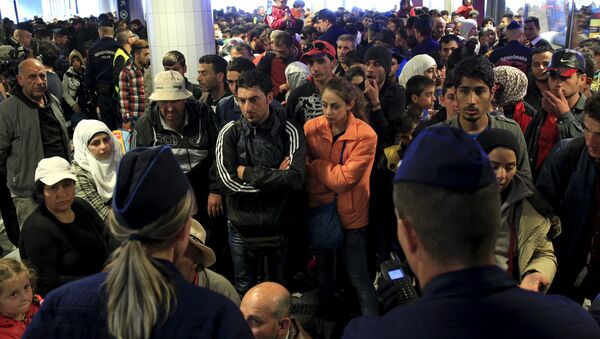On his Facebook page, he referred to the relevant statistics published by Eurostat, which, in turned, touched on the number of asylum applications filed between 2002 and 2014.
"A little bit of morning sobriety. Here's the official diagram by Eurostat," Ranks wrote in his Facebook page
НЕМНОГО УТРЕННЕЙ ТРЕЗВОСТИ:-)Вот официальный график Евростата….Поток беженцев в Европу никогда не оскудевал совсем….
Posted by Konstantins Ranks on 11 сентября 2015 г.
"Having peaked in 1992 (672,000 applications in the EU-15) and again in 2001 (424,000 applications in the EU-27), the number of asylum applications within the EU-27 fell in successive years to just below 200,000 by 2006," Eurostat said.
The EU-15 included Austria, Belgium, Denmark, Finland, France, Germany, Greece, Ireland, Italy, Luxembourg, the Netherlands, Portugal, Spain, Sweden and the United Kingdom prior to the Union's enlargement to include Malta, Cyprus and eight states in Eastern Europe in May, 2004.
According to Ranks, given that the population of the 15 member states which comprised the Union prior to 2004 account for 75 percent of the current EU-27, the 1992 peak pertaining to asylum seekers will only be surpassed if the number of asylum applicants exceeds 900,000.
"In other words, Europe has already seen an experience of this kind," Ranks said.
However, he didn't touch upon the ethnic composition of the migrants. One of the responses to the letter noted that many of the migrants Europe saw in 1992 hailed from the former Soviet Union.
Ranks made the remarks amid efforts by a number of EU countries, including Germany, to grapple with a rapidly escalating migrant crisis, as hundreds of thousands of people flee war-torn regions in the Middle East and North and Sub-Saharan Africa seeking refuge in the European Union.
Earlier this week, Germany opened its borders to some 20,000 people; the country has pledged to take in a total of 800,000 migrants by the end of this year.




